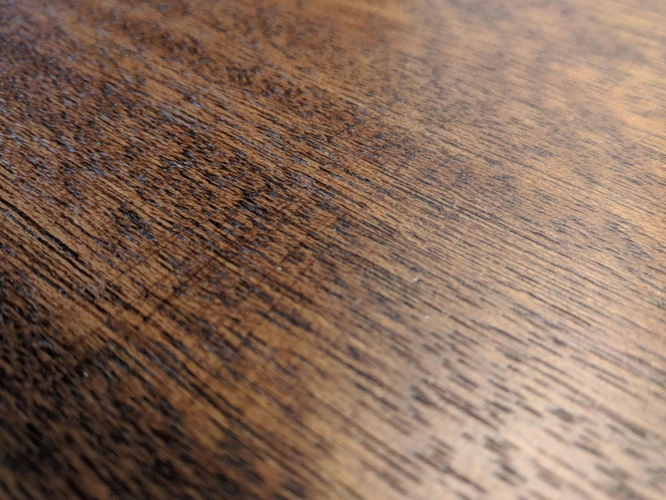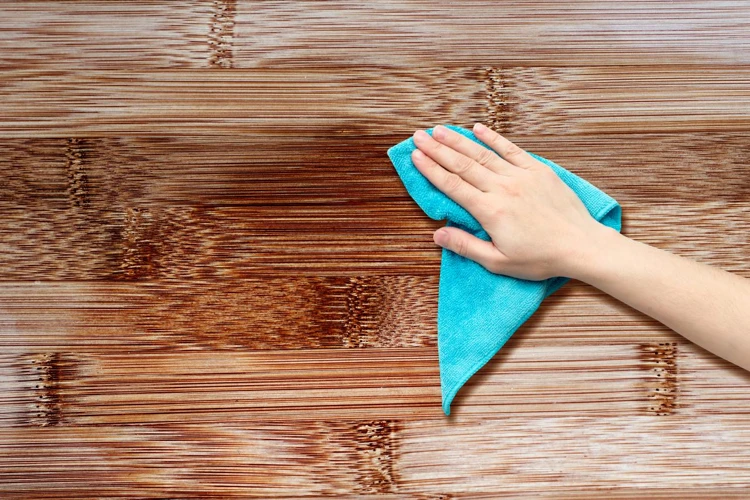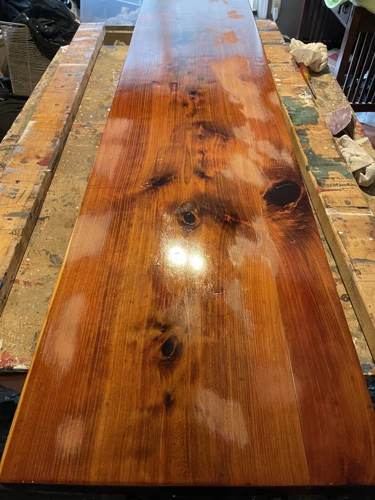Maintaining the beauty and shine of wooden furniture can be a daunting task, especially if you are not familiar with the proper techniques for polishing. Whether you have a vintage heirloom piece or a modern wooden fixture, knowing how to polish it correctly can keep it looking exquisite for years to come. However, there are common mistakes that people make when polishing wood that can ultimately damage the surface or fail to achieve desired results. In this article, we’ll delve into the common mistakes to avoid when polishing wood by examining the importance of choosing the right product, preparing the surface, using the correct technique, and protecting the wood. So, let’s explore the art of polishing wood with the care and attention it deserves.
Choosing the Wrong Product

One of the most crucial steps in polishing wood is selecting the appropriate product for your specific needs. However, this task can be overwhelming due to the countless options available on the market. Using the wrong product can lead to unsatisfactory results and, in some cases, damage to the wood surface. It is essential to avoid common mistakes that people make when choosing the wrong product for their furniture or flooring. To prevent these mistakes, you should consider some factors when buying a wood polish product, such as the type of wood, the finish of the surface, and your goal for the polishing process.
Failing to Check the Label
When polishing wood, it is crucial to check the label on the product before using it. Each product has different ingredients that can react differently with certain types of wood or finishes. Not checking the label can lead to irreparable damage to the wood surface, and in some cases, it could void any warranties. It is necessary to take the time to read the instructions and any warnings on the label.
To avoid damaging the wood, look for products that are safe for all wood surfaces. Some products are designed specifically for certain types of wood or finishes, so it is essential to read the label. Avoid using products made for cleaning other surfaces like glass or metal as they may contain harsh chemicals that can corrode the wood finish.
Not checking the label can also lead to using a product that is not the right consistency or type for your specific needs. For example, using a paste wax on a floor can be dangerous and cause slipping. It is essential to use the correct product for the job at hand.
Make sure to understand the advantages and disadvantages of each type of product before purchasing them. For natural and eco-friendly options, consider making your own DIY wood polish recipes or use a natural wood polish like beeswax. It is essential to remember that natural products may not provide the same level of shine as store-bought products. On the other hand, read about the benefits of using wood wax vs. polish to decide which one is the best fit.
Failing to check the label can have disastrous consequences when polishing wood. Take the time to read the instructions and any warnings on the label to avoid damage to the surface. Look for products that are safe for all wood surfaces and use the correct product for the job at hand. Consider the advantages and disadvantages of each type of product before purchasing them.
Mixing Products
Mixing different types of wood polish can lead to disastrous results. One common mistake people make is thinking that mixing two products will somehow enhance the outcome. When it comes to wood polish, mixing products can lead to irreversible damage to the wood’s finish.
Mixing different types of wood polish can be problematic in two ways. First, you run the risk of creating a film build-up. This is especially true when two different types of polish interact negatively with each other. Second, blending different products can cause uneven colors, and the result could be that unsightly blotches and spots appear on the wood’s surface.
It’s important also to note that using the wrong cleaning chemistry can also lead to incorrect results. Different types of wood require different types of treatment. Some polishes contain resin-based ingredients that are suitable for darker woods, while others contain oil-based ingredients that work well for lighter shades. Using different types of wood polish on a single surface can result in an uneven color tone.
Avoid mixing products to prevent these issues. Stick to a single product and use it consistently. It’s also vital to note that using too much of any polishing product could be wasting it on the surface and lead to issues.
Not Preparing the Surface

Before diving into polishing, it’s important to ensure that the surface is properly prepared. Without adequate preparation, the end result may be less than desirable. Some may assume that simply applying polish is enough, but this can lead to issues later on. The process may involve more steps than anticipated, but it is crucial to follow them in order to achieve the best outcome. Proper preparation can also help to extend the life of the polished item, whether it be furniture or flooring. To learn more about the benefits of natural wood polish, check out our article on natural wood polish benefits before proceeding with the steps for polishing.
Skipping the Dusting
When it comes to polishing wood, one of the most common mistakes people make is skipping the dusting stage. Dust and debris can easily accumulate on the surface of your wooden furniture or floors, and polishing over it can cause scratches or uneven finish. It’s important to make sure that you remove all the dirt and dust before polishing the surface.
Here are some tips to avoid skipping the dusting stage:
- Start by removing any visible dust and dirt on the surface with a soft cloth or dusting brush.
- For hard-to-reach areas, such as corners or crevices, use a soft-bristled brush or a cotton swab to remove the dirt.
- Make sure to lift or move any objects on the surface, such as vases, books, or picture frames, to get every inch clean.
- Use a microfiber cloth to wipe down the surface thoroughly. Microfiber cloths are better than traditional cleaning cloths, as they can trap dust and dirt more efficiently without scratching the surface.
By dusting effectively, you can ensure that the surface is clean and ready for polishing. However, if there are any stains or spills on the surface, you should also address them beforehand, as they can affect the finish of the wood. For more information on how to polish wood furniture, see our guide or some tips on antique wood furniture. If you are unsure which wood polish is safe for your furniture, check out this article on wood polish safety. Additionally, you can learn more about wood floor polish care in this guide.
Ignoring Stains and Spills
When it comes to polishing wood, it’s important to not ignore any stains or spills on the surface. If left untreated, they can become more difficult to remove in the future. Here are some tips to help you deal with stains and spills before polishing:
- Blot the spill immediately: If you notice a spill, don’t wait to clean it up. Use a soft cloth or paper towel to blot the affected area. Avoid rubbing back and forth, as this can spread the stain further.
- Use a mild cleaning solution: If water alone doesn’t remove the stain, use a mild cleaning solution specifically designed for wood surfaces. Apply it to a clean cloth and gently rub the stain until it disappears.
- Avoid harsh chemicals: Abrasive cleaners or harsh chemicals can damage the surface of the wood. Stick to mild solutions, and always test them on an inconspicuous area before using them on a larger stain.
- Rinse with water: After cleaning the stain, rinse the area with clean water and dry it with a soft cloth.
By taking the time to address stains and spills before polishing, you’ll ensure that your wood surfaces look their best for years to come.
Using the Wrong Technique

As important as choosing the right product is for polishing wood, it is equally vital to use the correct technique when applying it. Without a doubt, using the wrong technique can lead to all sorts of problems, including streaks, discoloration, and a cloudy residue that is almost impossible to remove. In this section, we’ll take a closer look at some of the most common mistakes people make when polishing wood and how to avoid them.
Over-spraying or Over-applying
When polishing wood, it’s important to apply the product in the right amount. Over-spraying or over-applying can lead to undesired results, such as a sticky or dull finish.
To avoid this common mistake, it’s crucial to follow the product’s instructions and apply it in thin layers. Using too much product can saturate the wood, leading to a build-up that is difficult to remove. You can use an applicator pad or a microfiber cloth to evenly spread the polish in a circular motion.
To help monitor the amount of product you’re applying, you can use a measuring cup or use a small amount at a time. Remember, less is more when it comes to polishing wood.
Table: Tips for Avoiding Over-spraying or Over-applying
| Tip | Description |
|---|---|
| Read the instructions | Follow the product’s guidelines for application and use the recommended amount. |
| Apply in thin layers | Use an applicator pad or cloth to spread the polish evenly in a circular motion. |
| Monitor the amount | Use a measuring cup or small amounts at a time to avoid over-spraying or over-applying. |
By taking the time to apply the polish correctly, you’ll achieve a beautiful, long-lasting shine on your wood furniture or flooring. Avoiding over-spraying or over-applying is just one of the many steps to keep in mind when polishing wood.
Not Buffing Properly
After applying a wood polish, it’s important to properly buff the surface to achieve a smooth and shiny finish. However, many people make the mistake of not buffing properly, which can lead to an uneven or streaky appearance. Here are some common reasons why this happens and how to avoid it:
- Using the wrong type of cloth: When it comes to buffing, the type of cloth you use is crucial. Avoid using rough or textured cloths as they can scratch the surface of the wood. Instead, use a soft, lint-free cloth that will gently buff the polish.
- Not using enough pressure: To effectively buff the surface, you need to apply a moderate amount of pressure. Don’t be afraid to press down a bit as you buff, using circular or back-and-forth motions until the surface is smooth and shiny.
- Buffing too soon: If you start buffing too soon after applying the polish, you may end up removing it instead of spreading it out evenly. Allow the polish to dry completely before you begin buffing. The drying time will depend on the product you’re using, so refer to the label for specific instructions.
- Leaving residue behind: Sometimes, even after buffing, you may notice a hazy or streaky appearance on the surface. This could be due to residual product that was not properly buffed away. To avoid this, go back over the surface once more with a clean, dry cloth to remove any excess polish.
Properly buffing the surface is an essential step in achieving a flawless finish when polishing wood. By selecting the right type of cloth, using proper pressure, waiting for sufficient drying time, and ensuring that no residue is left behind, you can achieve an even and beautiful shine on your wood surfaces.
Not Protecting the Wood
As much as you invest time and effort in polishing your wooden furniture or floors, it is equally important to take measures that protect them from damage. Neglecting the protection may lead to severe issues that could have been easily avoided. Consequently, it is critical to understand how to shield the wood with appropriate methods and products. In this section, we will examine some of the most common mistakes that people make while protecting wooden surfaces, and how to avoid them.
Leaving Wet Items on the Surface
One of the most common mistakes that people make when polishing wood is leaving wet items on the surface. This mistake is especially common in kitchens and bathrooms, where water is often present.
The Problem: When wet items, such as glasses or bottles, are left on a wooden surface for too long, they can cause water damage. This damage can lead to unsightly stains, warping or even mold growth.
The Solution: To avoid this mistake, always make sure to wipe up any spills or moisture immediately. Additionally, use coasters or mats under any items that may sweat or leak, such as cold drinks or flower vases.
Here’s a handy table summarizing the do’s and don’ts of leaving wet items on a wooden surface:
| Do: | Don’t: |
| Wipe up spills and moisture immediately | Leave wet items on the surface for an extended period of time |
| Use coasters or mats under sweat-producing items | Forget to regularly check the surface for spills and moisture |
| Place hot or cold items directly on the surface without protection |
By following these simple steps, you can protect your wooden surfaces from water damage and ensure their longevity.
Exposing the Wood to Extreme Temperatures
Exposing the wood to extreme temperatures can cause irreparable damage to its surface. It is important to avoid placing hot items such as dishes or pots directly on the wood without using a protective barrier. The intense heat can scorch and discolor the wood, leaving behind unsightly burn marks.
Table:
| Do’s | Don’ts |
|---|---|
| Use coasters or trivets to protect the wood from hot dishes or pots. | Place hot items directly on the wood surface without a protective barrier. |
| Allow hot items to cool completely before placing them on the wood surface. | Place hot items on the wood surface immediately after removing them from the oven or stove. |
| Use a tablecloth or placemats to protect the wood from prolonged exposure to direct sunlight. | Leave the wood surface exposed to prolonged direct sunlight, which can cause fading and discoloration. |
Additionally, extreme cold temperatures can also be harmful to the wood’s surface. It is important to avoid exposing the wood to freezing temperatures, as this can cause the wood to crack or warp. If the wood must be stored in a cold environment, be sure to properly cover and insulate it to avoid any potential damage.
Taking precautions to protect the wood from extreme temperatures will help maintain its natural beauty and longevity over time.
Conclusion
In conclusion, it is important to avoid common mistakes when polishing wood in order to ensure that the surface remains beautiful and protected for years to come. This involves choosing the right product and checking the label for any specific instructions, as well as avoiding mixing different products together. Proper surface preparation is also crucial, which includes dusting the surface and taking care of any stains or spills. Using the correct technique while polishing is important, such as avoiding over-spraying or over-applying polish and ensuring that the surface is buffed properly. Additionally, protecting the wood by avoiding leaving wet items on the surface and keeping it away from extreme temperatures is also important. By following these tips, wood furniture and surfaces can be kept looking their best and lasting for generations to come. So, always be mindful and take necessary steps to avoid mistakes while polishing wood to keep it looking beautiful and well-maintained.
Frequently Asked Questions
What is the best product to use for polishing wood?
The best product to use for polishing wood depends on the type of wood and the condition it’s in. Always check the label for suitable use and follow the manufacturer’s instructions.
What should I do before polishing wood?
You should prepare the surface by dusting and cleaning any stains or spills. If necessary, use a sandpaper to remove any rough spots or imperfections.
Can I mix different polishing products?
No, you should never mix different polishing products as it can result in an undesirable reaction.
What happens if I over-apply the polishing product?
If you over-apply the polishing product, you’ll end up with a sticky and greasy surface that may attract more dirt and dust. Always use the recommended amount of product.
Why is buffing important when polishing?
Buffing helps spread the polishing product evenly and remove any excess. It also helps bring out the natural shine of the wood and prevent streaks or smears.
How do I protect the wood after polishing?
You can protect the wood by avoiding leaving wet items on the surface and keeping it away from extreme temperatures.
Can I use water to clean the surface before polishing?
No, it’s not recommended to use water or any wet cleaning products on wood as it can damage the surface and cause warping or staining.
Is it okay to use a lot of pressure when buffing the wood?
No, you should never use a lot of pressure when buffing the wood as it can cause scratches or damage to the surface. Use a light touch and let the machine or cloth do the work.
Can I polish painted or varnished wood?
No, you should not use any polishing products on painted or varnished wood. Instead, use a suitable cleaner or wax, or seek professional advice.
How often should I polish my wood furniture?
It depends on how often you use the furniture, but generally, you should polish it once every few months to maintain its shine and protect the surface.
